“Forbidden connotations”: The source of Malcolm McLaren’s Naked Footballer design identified
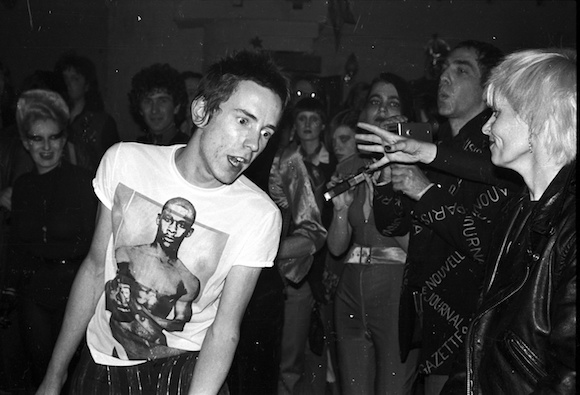
//John Rotten performing with the Sex Pistols at Andrew Logan’s Valentine’s Ball, February 1976 in a hybrid Sex t-shirt combining the images from the ‘Tits’ and ‘Naked Footballer’ designs. Note Jordan Mooney (far left), Luciana Martinez (third right), Derek Jarman (with camera) and Vivienne Westwood (far right). Photo: Joe Stevens. No reproduction without permission//
Last summer I spent a pleasant afternoon in the company of American academic Benjamin Court, who has been researching a dissertation entitled The Politics of Musical Amateurism, 1968-1981.
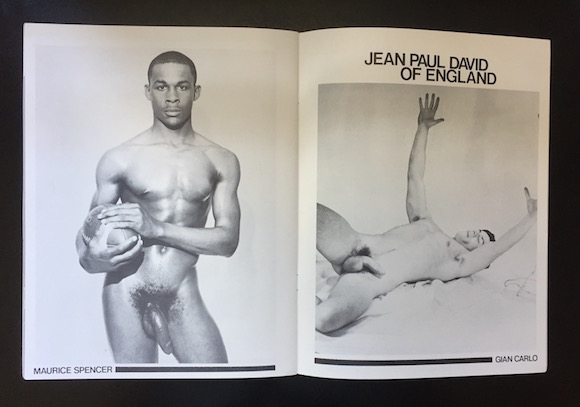
//The image of Maurice Spencer by Dave Martin (left) in Bob Anthony’s Beefcake No 5, 1969. Paul Gorman Archive. No reproduction without permission//
Now Court has published the chapter concerning the Sex Pistols (which he is hoping will form the basis of a new book). In this he drilled down into the group’s visual expression as realised through fashion designs by Malcolm McLaren and Vivienne Westwood, and in particular the origins and “forbidden connotations” of the screen-printed nude images which appeared on t-shirts worn by members of the Pistols.
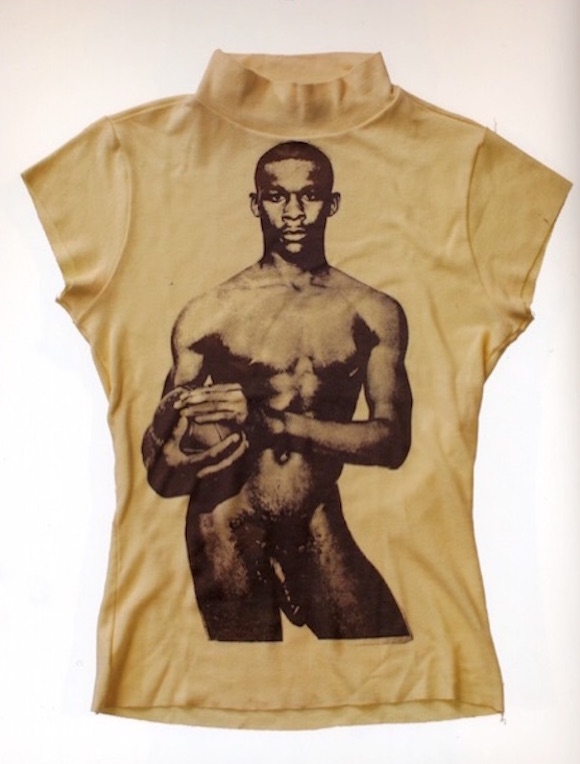
//Naked Footballer polo top, Sex, 1976. Hiroshi Fujiware Archive//
“Fashion scholars have noted how trends in the 1970s, particularly in London, borrowed from queer art scenes in order to break taboos,” writes Court. “McLaren latched onto the transgressions of the underground sex scene and imagined a band that would exploit the alleged offending effect of such deviance on the mainstream.”
Court selects as one of his examples the t-shirt design known as “Naked Footballer”, which McLaren created in the summer of 1974 while transforming his store at 430 King’s Road from Let It Rock into Sex. The shirt became a particular favourite of Pistols bassist Sid Vicious.
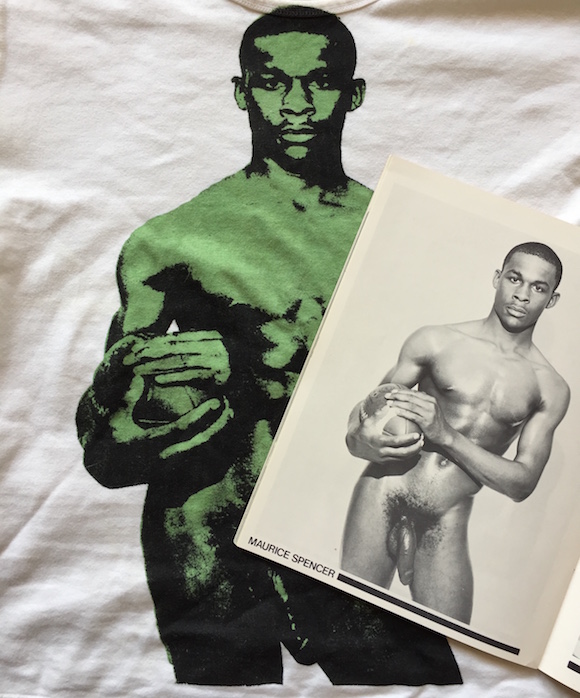
//Mid-00s repro t-shirt with the page from Bob Anthony’s Beefcake No 5. Paul Gorman Archive. No reproduction without permission//
Court reveals the source of the central image as a male physique photograph taken in 1969 by Dave Martin which appeared in the fifth issue of the magazine Bob Anthony’s Beefcake that year; McLaren obtained a copy in a gay book store in Christopher Street when visting New York in the late summer of 1973.
Based in San Francisco with a studio which he ran from 1952 to 1974, Dave Martin was one of the many victims of America’s so-called Lavender Scare anti-gay witch-hunts of the mid-1950s, and served time after being found guilty of obscenity charges.
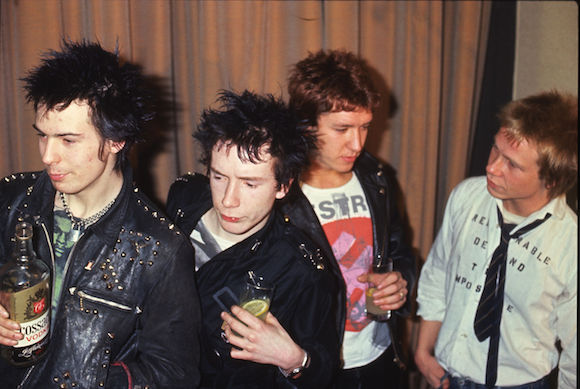
//Vicious in the top with the rest of the Sex Pistols all in McLaren/Westwood designs, London, March 1977. Photo: Peter Gravelle//
In explaining his attraction to these subjects years later, Martin echoed the late Jim French – whose Longhorns-Dance illustration was appropriated by McLaren for the notorious Cowboys shirt – in conversation with me about his work in this field: “It certainly wasn’t for the money. The pictures didn’t sell — no one wanted them. I wouldn’t even list them in catalogues. I took them to please myself, for the sheer beauty of the male body.”
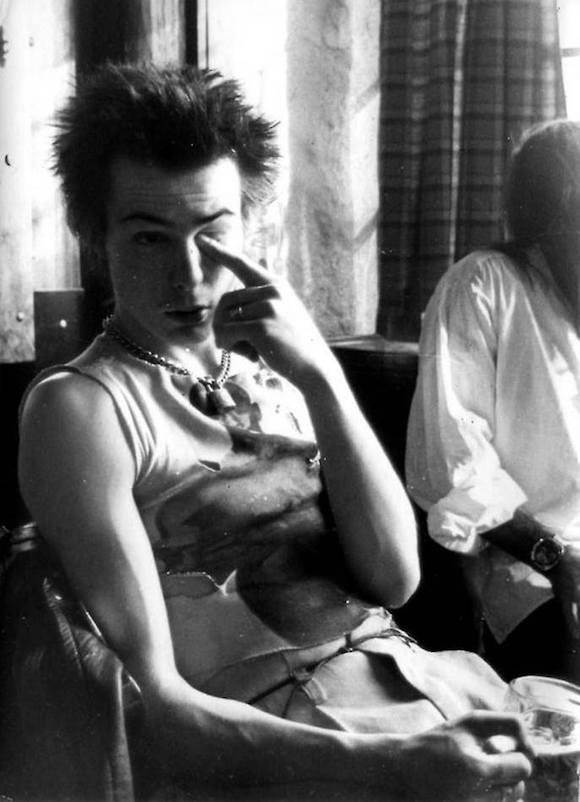
//Sid Vicious, Denmark, July 1977. Photo: Audun Engh//
The subject of the photograph was the footballer Maurice Spencer who later made his name in the NFL with New Orleans, where he won the Most Valuable Defensive Player Award and distinguished himself as a Guinness Book World Record Holder.
In his paper, Court points to a central irony in the decision by McLaren to place such images on t-shirts designed to be worn by young people as fashion garments. “Even if he and Westwood intended to use these images to build a specialized style that catered to an emerging youth subculture, they did so by appealing to a heteronormative value in the dominant culture — the desire to be shocked by deviance.”
Read about the 2007 Stanford University project Beefcake: The Physique Photography of Dave Martin here.
Details of Benjamin Court and his work are here.
